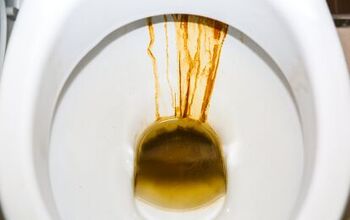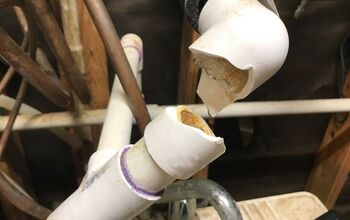What Causes Drain Worms? (Find Out Now!)

You may have a drain worm problem if you find small black worms in your bathroom, kitchen sink, or toilet. “Drain fly worms” or “drain fly larvae” are other names for these little black or brown worms. But what exactly are they?
Drain worms are caused by organic materials like skin cells and human hair that get trapped in your drain. They love hiding in pipes and standing water. Finding drain worms is a good indication that it’s time for you to deep clean your pipes, otherwise, the problem will only get worse.
In this article, we will talk a bit about what drain worms are and how they’re caused so you can get a good idea of what to watch for and how to take care of the issue once it’s discovered. Let’s get started!
Do You Need Pest Control Services?
Get free, zero-commitment quotes from pro contractors near you.

What Are Drain Worms?
Drain worms are the larvae of flies. Sewer flies, filter flies, and sink flies are all names for the same species. They deposit eggs, and the eggs hatch into larvae in 32 to 48 hours. Their lifespans are rather brief. It’s also worth noting that drain flies don’t deposit eggs in people.
The larvae survive for 8–24 days before entering the pupal stage, which lasts 1–2 days until the adult flies emerge. Larvae are roughly 4–10mm long and feed on sewage and decaying organic materials. They appear black because they are thin with a dark stripe on the dorsal parts.
You could notice small brown and black stripes if you look closely. Larvae have no eyes, are legless, and have a dark breathing tube on one end that extends out of the film to get air.
What Causes Drain Worms?
Drain worms dwell in decaying organic materials, such as human hair and skin cells, and feed on them. Pipes, p-traps in plumbing fixtures, and standing water are all good sites for them to grow. The majority of people that visit our website have a problem with their bathroom shower, sink, or sump pit.
Stagnant water is a good breeding site for them, which is why you’ll notice them when returning to a property that has been vacant for a few days. If they appear, you’ll need to devote extra effort to clear your drains.
Drain worms, on the other hand, do not always indicate clogged pipes. You could also have a plumbing issue, such as a leaking pipe that causes stagnant water to build up, providing an ideal breeding ground for bacteria. A sewer line break beneath your home can be more serious in some circumstances.
Where Would You Typically Find Drain Worm Larvae?
Drain worms can be found in drains, showers, sinks, toilets, shampoo bottles, air conditioner pipes, garbage bags, and other sites where rainwater accumulates. They are frequently seen in septic tanks, which is usually an indication of a healthy tank!
How Do You Know If You Have Drain Worms?
All worms are not drain worms. As a result, it’s critical to confirm that you have drain worms before looking for a remedy to get rid of them. The appearance of adult drain flies is a piece of sure evidence that there is a larva present. Even if you are unable to see them.
Place some sticky tape over the drain in a room where the drain flies are present or where you observed the worms if you’re not sure if you have drain flies. Allow it to sit for a few hours before inspecting it for flies or worms. Because the worms are nocturnal, this should be done at night when they are most active.
Getting Rid Of Drain Worms
It makes sense to get rid of drain worms because of the potential health dangers they provide. The most effective technique to get rid of parasitic worms is to destroy their breeding sites.
Clean Your Pipes
To loosen and remove sludge, scrub the outside of the drain pipes. Remove biological build-up and extra waste from the inside of the pipes with a metal pipe, then rinse with hot water.
Cleaning the pipes guarantees that the worms’ feeding ground is destroyed. They’ll be extinct in a few weeks. If you have a drain fly problem in your RV, the procedure for getting rid of them is slightly different.
Use Drain Cleaners
Enzyme cleansers work by consuming organic material in the pipes and removing breeding grounds. Green Gobbler, which operates as a complete clog-removing package, is an example of an enzyme drain cleaning.
Drano Max Build-up Remover or Drano Max Gel Clog Remover works to keep your pipes clear of obstructions. For the greatest results, follow the manufacturer’s directions when using drain cleaners.
Eradicate All Adult Flies
Adult flies can lay more eggs even after the larvae have been removed from the pipes, so getting rid of them is critical.
Flytraps and swatters, as well as DIY approaches such as mixing liquid dish soap with water or an apple cider vinegar trap, can be used to kill flies.
Provide Regular Maintenance
The easiest approach to avoid having to deal with this problem again is to prevent it! Simple procedures such as pouring half a cup of baking soda down each drain, followed by an equal amount of white vinegar, will keep them clean. A bio gel, such as invade, is another option.
Allow for several minutes for the mixture to form before rinsing the pipes with hot water. Once or twice a week, run hot water through less frequently used drains, and keep up with septic system maintenance.
Do You Need Pest Control Services?
Get free, zero-commitment quotes from pro contractors near you.

Related Questions
Why are worms coming out of my drain?
Drain fly larvae are most likely the source of worms coming up from your shower drain. Sewer flies and filter flies are other names for drain flies.You either have scum buildup on the walls of your pipes or a horrible clog of hair they’re feeding on if they’re coming up from your shower.
Can drain worms live in humans?
Drain flies are not known to bite humans or carry diseases. In susceptible individuals, they can cause bronchial asthma, and their larvae can cause myiasis, a parasitic infestation in which the larvae grow inside human tissue.
Why do drain flies keep coming back?
The most common cause of drain flies returning is poor mechanical cleaning. Heat and chemicals, particularly severe ones like bleach, have little effect on eggs and larvae.

Heather is a passionate writer who loves anything DIY. Growing up, she learned everything from home repairs to design, and wants to share her tips with you. When she's not writing, she's usually hiking or searching for her next DIY project.
More by Heather Robbins



























